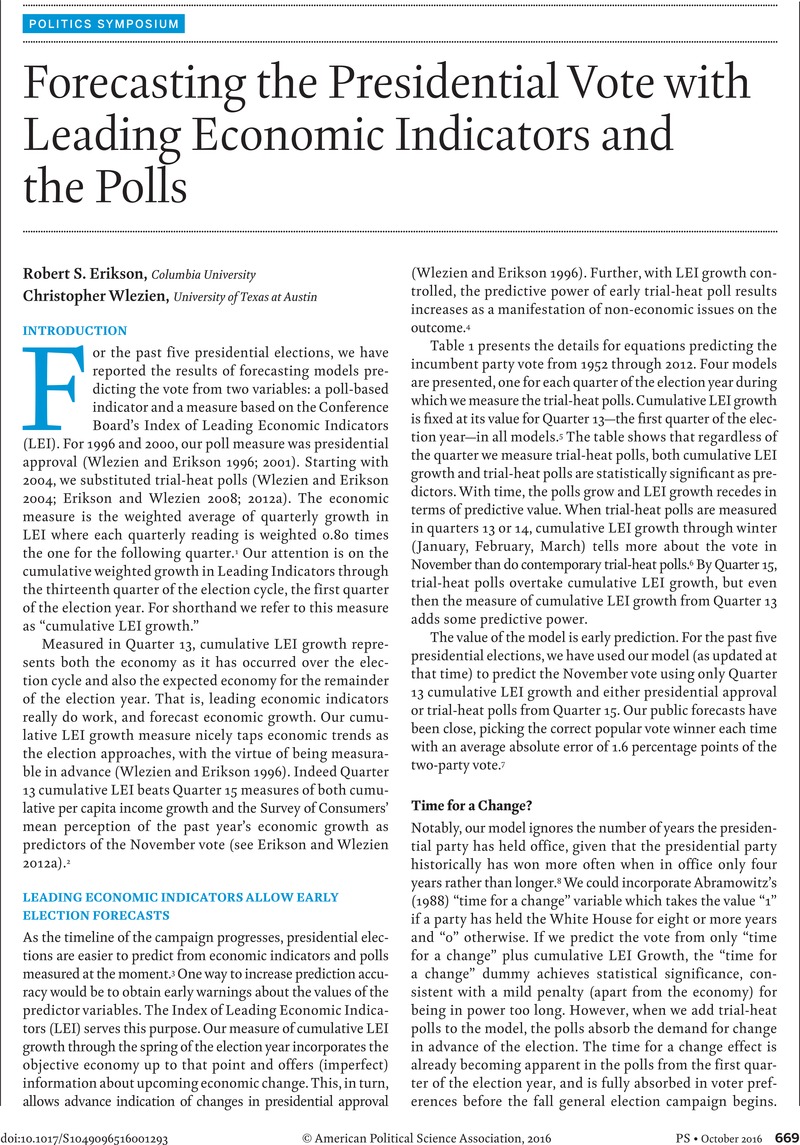Crossref Citations
This article has been cited by the following publications. This list is generated based on data provided by Crossref.
Gelman, Andrew
and
Azari, Julia
2017.
19 Things We Learned from the 2016 Election.
Statistics and Public Policy,
Vol. 4,
Issue. 1,
p.
1.
Zolghadr, Mohammad
Niaki, Seyed Armin Akhavan
and
Niaki, S. T. A.
2018.
Modeling and forecasting US presidential election using learning algorithms.
Journal of Industrial Engineering International,
Vol. 14,
Issue. 3,
p.
491.
Lewis-Beck, Michael S.
and
Tien, Charles
2018.
Candidates and campaigns: How they alter election forecasts.
Electoral Studies,
Vol. 54,
Issue. ,
p.
303.
Andrianova, E. G.
Golovin, S. A.
Zykov, S. V.
Lesko, S. A.
and
Chukalina, E. R.
2020.
Review of modern models and methods of analysis of time series of dynamics of processes in social, economic and socio-technical systems.
Russian Technological Journal,
Vol. 8,
Issue. 4,
p.
7.
Holian, David B.
and
Prysby, Charles
2020.
Polls and Elections: Did Character Count? Candidate Traits and the 2016 Presidential Vote.
Presidential Studies Quarterly,
Vol. 50,
Issue. 3,
p.
666.
Enns, Peter K.
and
Schuldt, Jonathon P.
2021.
The 2020 Democratic Primary.
p.
31.





